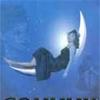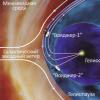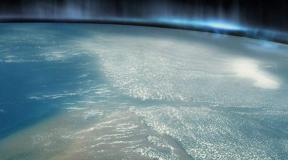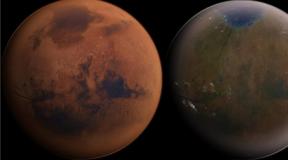The largest meteorites in the history of the earth. What will happen to the Earth if a meteorite or asteroid falls on it. The largest meteorites that fell on Earth
Our planet is often attacked by various space objects. Most of them burn up in the atmosphere, never reaching the Earth's surface. Those that evaporate we call shooting stars or meteors (comet remnants). However, some larger lucky ones, meteorites, still sometimes manage to reach the surface of the Earth, on which they can lie unchanged for thousands of years.

Asteroids are even larger space objects. One theory suggests that one such rock left the Earth without dinosaurs some 63 million years ago, and we narrowly avoided a collision with another like it, 2012 DA14, in 2013.
Below we will talk about the six largest meteorites ever known to earthlings.
The largest meteorites
Iron-nickel Willamette
American Museum of Natural History, 1911
This is the largest meteorite ever found in the United States. Its weight is 15.5 tons and its size is 7.8 square meters. The dents in the meteorite were not caused by the fact that it was partially burned while reaching the Earth. The thing is that it rusted for hundreds of millions of years, lying in the humid forests of Western Oregon.
The meteorite ended up in the American Museum of Natural History in New York in 1906. Before getting to the museum, an interesting story happened to the meteorite.
Initially, the meteorite was discovered by the Indians, who moved it to the Willamette Valley of Oregon. This assumption arose due to the fact that the impact crater was not found. It is believed to be located in Canada.
The Indians worshiped the stone, calling it a guest from the moon, and they used rainwater collected in the recesses of the stone to treat diseases.
In 1902, the meteorite was discovered by miner Ellis Hughes. The man immediately realized that in front of him was not just a stone, so for three months he slowly moved the find to his site.
However, it was exposed, and the pebble was recognized as the property of a steel company in Oregon, on whose territory the meteorite was originally located.
In 1905, the meteorite was bought by a private individual for $26,000 and a year later donated to a museum in New York, where it still resides.
After the stone ended up in the museum, the Indians of Oregon demanded the return of the meteorite, since it had been the object of their religious cult for many centuries and took part in an annual ritual ceremony.
However, it turned out to be impossible to remove the meteorite from the museum without destroying the walls, so an agreement was concluded with the Indians under which a ceremony could be held on the territory of the museum once a year.
Largest meteorites
Mbozi meteorite
This meteorite was discovered in the 1930s in Tanzania. The meteorite is almost 1 meter in height, 3 meters in length, and its weight is almost twice that of Willamette and is 25 tons.
For many centuries, local tribes considered Mbozi a sacred stone and did not tell anyone about it due to various taboos. They called it "kimondo", which translates from Swahili as "meteor".
It is interesting that there is no crater at the site where the meteorite was discovered. This suggests that after the collision with the Earth, the meteorite rolled on the surface for some time.
The meteorite is 90 percent iron, like most of its known counterparts, which also explains its dark color. The stone shows very visible traces of melting and heating to very high temperatures, which is a consequence of passing through the upper layers of the atmosphere.
People dug a ditch around the meteorite, since initially Mbozi was partially submerged in the ground. They left a layer of soil underneath, which later became a natural pedestal.
The largest meteorites
Cape York Meteorite
This is the third largest meteorite that fell to Earth about 10,000 years ago. The meteorite was named after the place where its most significant fragments were discovered in Greenland.
The largest fragment of the meteorite is called "Anigito" and weighs 31 tons. The history of his name is interesting. When the stone was delivered to the American Museum of Natural History by ship in 1897, the four-year-old daughter of explorer Robert Peary broke a bottle of wine on it and uttered a meaningless word in her language: “a-ni-gi-to.”
They decided to name the pebble, which the Eskimos, who were the first to find the meteorite, previously called “Tent”. "Anigito" took root better.
The second largest fragment of the meteorite is called Agpalik (the aborigines called it “Man”). It was discovered in 1963, weighs 20 tons and is now in the Geological Museum at the University of Copenhagen in Denmark.
Various meteorite fragments were found between 1911 and 1984. In addition to “Man” and “Anigito”, they also found “Woman” (3 tons), “Dog” (400 kg), etc.
It is worth noting that for a long time, the Inuit tribes used fragments and fragments of the Cape York meteorite to create their harpoons and tools.
Meteorites that fell to Earth
Meteorite Bakubirito
This is the largest meteorite found in Mexico. It weighs about 20 tons, is 4.5 meters long, 2 meters wide, and 1.75 meters high. It was discovered by geologist Gilbert Ellis Bailey near the city of Sinaloa de Leyva.
The pebble was found in 1863, and now it can be seen in the scientific center of the city of Sinaloa.
El Chaco meteorite
This meteorite is the second largest meteorite ever to collide with the Earth. It weighs almost twice as much as the previous one on this list - 37 tons!
It fell in Argentina and is part of a group of meteorites called Campo del Cielo. As a result of its fall, a crater was formed with an area of 60 square meters.
El Chaco was discovered in 1969 with the help of a metal detector, because it was located underground at a depth of 5 meters.
Meteorite hunter Robert Haag tried to steal it in 1990, but local police responded in time.
Last year, 2016, another fragment was discovered and brought to the surface, which is believed to be part of the same group of meteorites as El Chaco.
Goba meteorite
This meteorite is the largest ever found. It fell in southwest Africa, in Namibia, and never moved. It is twice as heavy as its closest rival, El Paco: this monster weighs 60 tons.
The pebble got its name from the Hoba West Farm, on whose territory it was found in 1920. It was found by pure chance by the owner of the farm when he was plowing one of his fields, because neither the crater nor other traces of the fall remained.
Goba is interesting because, compared to other meteorites, its surface is smooth and flat. It is 84 percent iron and 16 percent nickel.
It is worth adding that the meteorite was never weighed. It is believed that when it fell to Earth, its weight was about 90 tons. According to estimates at the time of discovery in 1920, the baby weighed about 66 tons, however, scientific research, vandalism and erosion still took their toll, so today Goba has lost weight to 60 tons.
Goba is currently considered the largest piece of iron of natural origin. It covers an area of 6.5 square meters. It is believed to have fallen to Earth about 80,000 years ago and has not moved since due to its enormous size.
Oddly enough, there was never a need to dig it up. According to one theory, due to its relatively flat shape, the meteorite slid along the surface rather than going deeper into the ground.
TASS DOSSIER. On December 6, 2016, a meteorite exploded in the sky over Khakassia. Three flashes were recorded, the hum was heard in the Abakan area.
As stated by Viktor Grokhovsky, a member of the Committee on Meteorites of the Russian Academy of Sciences, professor at the Ural Federal University, the meteorite is several times smaller than its Chelyabinsk “brother” that fell into Lake Chebarkul in February 2013.
Meteorites are solid natural bodies of cosmic origin that fall onto the surface of a large celestial object, such as a planet. They can consist of minerals (stone meteorites), metals (iron) and be of a mixed type (iron-stone).
The Earth's surface reaches 9% of the mass of all meteorites. According to a number of scientists, a meteorite squall with a total mass of approximately 21.3 tons hits our planet every year. According to statistics, only one out of 100 thousand meteorites has destructive power. Most of the meteorites found on Earth have a mass from a few grams to several kilograms.
Most often, meteorites fall in Antarctica: according to experts, about 700 thousand of them are scattered on the mainland. The largest accumulation of meteorites on a limited surface area, discovered in 1979, is also located there. The most massive meteorite - weighing more than 60 tons - was found in Namibia in 1920 g., it received the name Goba.
Cases of meteorites falling on populated areas are extremely rare: only a few such facts are known. Moreover, only twice did falling celestial bodies injure people (1954, Alabama, USA; 2004, UK).
The first reliably recorded meteorite fall in world history dates back to November 16, 1492. This happened near the French village of Ensisheim in the Upper Rhine region. The stone that fell from the sky weighed about 127 kg. His fall was witnessed by numerous eyewitnesses, including the famous German artist and graphic artist Albrecht Durer. He sketched this event on a small wooden board measuring 23x17 cm.
Chronology of five known cases of large meteorite falls in the 20th - 21st centuries
June 30, 1908 over the river basin. A meteorite fell in Podkamennaya Tunguska in Eastern Siberia, which later received the name “Tunguska”. As a result, in the air, when the celestial body entered the dense layers of the atmosphere, an explosion with a power of about 50 Mt in TNT equivalent occurred. The shock wave devastated up to 2 thousand square meters. km. To date, over 5 thousand fairly large fragments of the Tunguska meteorite have been found.
On February 12, 1947, a meteorite weighing more than 23 tons (one of the ten largest in the world) was recorded in the Primorsky Territory. It was named Sikhote-Alin after the name of the mountains over which the meteorite scattered iron rain over an area of 35 square meters. km.
On March 8, 1976, a meteorite weighing over 4 tons fell in northeast China. It was named Kirin.
On February 8, 1969, the Allende meteorite fell in northern Mexico. When it fell, it shattered into many fragments. About 2-3 tons of fragments were collected. Allende is considered the largest carbonaceous meteorite found on Earth.
On February 15, 2013, a meteorite fell in the area of Lake Chebarkul, Chelyabinsk region, which received the official name “Chelyabinsk” (also known as “Chebarkulsky”). The meteor shower was observed by residents of five regions of Russia at once - Tyumen, Sverdlovsk, Chelyabinsk, Kurgan regions and Bashkiria. Most of the fragments fell into the lake. In October 2013, fragments with a total mass of 654 kg were recovered from Chebarkul; in March 2014, the largest fragment weighing several tons was found at the bottom of the lake.
Astrophysicists from Canada claim that the mass of the stream of meteorites bombarding our long-suffering planet exceeds 21 tons per year. But in most cases this goes unnoticed, since a person can observe and find meteorites only in the habitable zone.
The share of land on the Earth's surface is only 29%; the rest of the planet is occupied by the World Ocean. But even from this 29% it is necessary to take away places that are not inhabited by humans or are completely unsuitable for habitation. Therefore, finding a meteorite is a great success. However, there was a case when a meteorite itself found a person.
The case of a meteorite colliding with a person
In the entire history of celestial bodies falling to Earth, only one officially documented case of direct contact of a meteorite with a person is known.
It happened in the USA on November 30, 1954. A four-kilogram meteorite broke through the roof of a house and injured the owner’s leg. This means that there is still a risk that a more serious guest from outer space could fall on people’s heads. I wonder what the largest meteorite fell on our planet?
Meteorites are divided into three categories: stony, stony-iron and iron. And each of these categories has its own giants.
The largest stone meteorite
Relatively recently, on March 8, 1976, space presented the Chinese with a gift in the form of stones falling to the surface of the earth for 37 minutes. One of the fallen specimens weighed 1.77 tons. It was the largest meteorite that fell to earth, having the structure of a rock. The incident occurred near the Chinese province of Jilin. The space guest received the same name.
To this day, the Jilin meteorite remains the largest rock meteorite discovered on earth.
Largest ironstone meteorite
The largest representative of the category of iron-stone meteorites weighed 1.5 tons. It was found in 1805 in Germany.
A fellow German meteorite, found in Australia, weighed only 100 kg less than the German one.
But everyone was surpassed by the iron guest from space, whose weight was tens of times greater than all previously found meteorites.
Largest iron meteorite

In 1920, an iron meteorite with a diameter of 2.7 meters and weighing over 66 tons was discovered in southwestern Namibia! A larger specimen than this has never been found on our planet. It turned out to be the largest meteorite to fall to Earth. It was named after the Goba West farm, whose owner came across it while cultivating a field. The approximate age of the iron block is 80 thousand years.
Today it is the largest solid block of natural iron.

In 1955, the largest meteorite that fell to earth, Goba, was declared a national monument and taken under state protection. This was a necessary measure, since over the 35 years that the meteorite was in the public domain, it lost 6 tons in mass. Part of the weight was lost as a result of natural processes - erosion. But numerous tourists made the main contribution to the “weight loss” process. Now you can approach the celestial body only under supervision and for a fee.

The meteorites mentioned above are, of course, the largest in their category ever discovered. But the question of which largest meteorite fell to earth remained open.
The meteorite that killed the dinosaurs
Everyone knows the sad story of the extinction of dinosaurs. Scientists are still arguing about the cause of their death, but the version that a meteorite was the culprit of the tragedy remains the main one.
According to scientists, 65 million years ago the Earth was hit by a huge meteorite, which caused a catastrophe on a planetary scale. The meteorite fell on the territory that now belongs to Mexico - the Yucotan Peninsula, near the village of Chicxulub. Evidence of this fall was the impact crater found in 1970. But since the depression was filled with sedimentary rocks, they did not carefully examine the meteorite. And only 20 years later scientists returned to study it.

As a result of the work, it turned out that the crater left by the meteorite has a diameter of 180 km. The diameter of the meteorite itself was about 10 km. The impact energy during the fall was 100,000 Gtv (this is comparable to the simultaneous explosion of 2,000,000 of the largest thermonuclear charges).
It is assumed that a tsunami was formed as a result of the meteorite impact, the wave height varied from 50 to 100 meters. The dust particles raised during the impact tightly blocked the Earth from the Sun for several years, which led to a sharp climate change. and periodic large-scale fires aggravated the situation. An analogue of nuclear winter has arrived on the planet. As a result of the disaster, 75% of animal and plant species became extinct.
Nevertheless, officially the Chicxulub meteorite is the largest meteorite that fell to earth 65 million years ago. He practically destroyed all life on the planet. But in history it ranks only third in size.
First among the giants
Presumably 2 billion years ago, a meteorite fell on Earth, leaving a mark 300 km in diameter on its surface. The meteorite itself supposedly had a diameter of more than 15 km.
The crater left after the fall is located in South Africa, in the Free State province, and is called Vredefort. This is the largest impact crater, and was left by the largest meteorite that fell to Earth in the entire history of our planet. In 2005, the Vredefort Crater was listed as a UNESCO World Heritage Site. The largest meteorite that fell to Earth did not leave a photo as a souvenir, but a huge scar in the form of a crater on the surface of our planet will not allow us to forget about it.

It has been noticed that the fall of meteorites, the size of which is measured at least tens of meters, occurs with a periodicity of hundreds of years. And larger meteorites fall even less frequently.
According to scientists, a new guest wants to visit Earth in 2029.
Meteorite named Apophis
The meteorite that threatens our planet was named Apophis (that was the name of the snake god, who was the antipode of the sun god Ra in Ancient Egypt). It is not known for certain whether it will fall to Earth or miss and pass near the planet. But what happens if a collision does occur?
Scenario of Apophis colliding with Earth
So, it is known that the diameter of Apophis is only 320 meters. When it falls to Earth, there will be an explosion equal in power to the 15,000 bombs dropped on Hiroshima.

If Apophis hits the mainland, an impact crater will appear, having a depth of 400-500 meters and a diameter of up to 5 km. The resulting explosion will destroy permanent structures at a distance of 50 km from the epicenter. Buildings that do not have the strength of a brick house will be destroyed at a distance of 100-150 km. The column of dust will rise to a height of several kilometers and then cover the entire planet.
Stories spread by the media about nuclear winter and the end of the world are too exaggerated. The size of the meteorite is too small for such consequences. The temperature may drop by 1-2 degrees, but after six months it will return to normal. That is, the predicted catastrophe, if it does happen, will be far from global.
If Apophis falls into the ocean, which is more likely, a tsunami will occur that will cover coastal areas. The height of the wave will depend on the distance between the shore and the location of the meteorite fall. The initial wave can be up to 500 meters high, but if Apophis falls in the center of the ocean, then the wave reaching the shore will not exceed 10-20 meters. Although this is also quite serious. The storm will continue for several hours. All these events should be considered only as possible with some degree of probability. So will Apophis collide with our planet or not?
The probability of Apophis falling to Earth
Apophis will theoretically threaten our planet twice. The first time - in 2029, and then - in 2036. After conducting observations using radar installations, a group of scientists completely ruled out the possibility of a meteorite colliding with the earth. As for 2036, today the chance of a meteorite colliding with the Earth is 1:250,000. And every year, as the accuracy of calculations increases, the probability of a collision decreases.
But even with this probability, various options for forcing Apophis to deviate from course are being considered. Apophis is thus an object of interest rather than threat.
In conclusion, I would like to note that meteorites are severely destroyed when entering the earth’s atmosphere. When approaching the Earth, the speed of the fall of guests from space is 10-70 km/sec, and upon contact with a gaseous atmosphere, which has a fairly high density, the temperature of the meteorite increases to critical, and it simply burns up or is very badly destroyed. Thus, the atmosphere of our planet is the best protector against uninvited guests.
WISE telescope, photo: NASA
Based on the results of the work of the telescope, NASA in 2010 and 2011 published a catalog of near-Earth objects - about 18.5 thousand in total, and also used the danger criteria developed at the Massachusetts Institute of Technology (Turin scale), according to which all asteroids in the NEOWISE catalog were colored according to the probability of their collision with the Earth from white (no danger) to red (collision imminent).
Good news: as of today, all objects in this catalog are white. This means that so far scientists have not been able to find a single near-Earth asteroid whose probability of falling to Earth in the next 200 years exceeds 1%, or three on the Turin scale. Periodically, objects with non-zero danger scores appeared in the catalog, but as their orbits were refined, they quickly dropped first to one, and then to zero.
Two asteroids - Apophis and Bennu - were assigned very high hazard index values when they were discovered. Opened in 2004, the 350-meter Apophis (by the way, it was named not in honor of the ancient Egyptian god Apep, but in honor of the villain from the TV series Stargate: SG-1) first received a record two at that time, and then a four on the Turin scale. The collision with Earth was supposed to occur in 2036.
A photograph of the Itokawa asteroid taken during the Japanese Hayabusa mission in 2005. Presumably, the asteroid is identical in composition and size to Apophis. Photo: ISAS/JAXA
Two years later, when astronomers refined the asteroid’s orbit, it was lowered first to one and then to zero. The probability that Apophis will meet Earth is estimated at 0.00089%, or one chance in 112 thousand. Today, the most dangerous near-Earth object is considered to be the 500-meter Apollo asteroid 2009 FD, which may fall to Earth in 2185 with a probability of 0.29%.

Orbit of Apophis
As for objects the size of Chelyabinsk, scientists cannot estimate how often they can fall to Earth and whether the real threat is great. In 2011, at the first presentation of the NEOWISE catalog, NASA reported that today we know only about five thousand asteroids about one hundred meters in size, while their total number is estimated at several tens of thousands. The number of smaller objects within the main asteroid belt may reach a million.
Made from something
It is impossible to accurately assess the damage due to the fact that we know very little about the composition of asteroids, and this is critical information, without which it is impossible to assess the consequences of the fall of a hypothetical “Apophis” to Earth.
The idea of studying asteroids “in situ” has been in the minds of astronomers for quite some time. The pioneer in this matter was the Japanese Hayabusa probe, which went to the Itokawa asteroid in 2008 in order to collect soil samples. Due to numerous breakdowns and fantastic bad luck, the Hayabusa managed to collect only one and a half thousand dust particles, which it nevertheless delivered to Earth in 2010.

Hayabusa-2. Image: JAXA
In the winter of 2014, the successor of the unsuccessful probe, the Hayabusa-2 apparatus, set off for the asteroid 1999 JU3, which will arrive at the target in 2018. In parallel, NASA is developing its own mission, OSIRIS-REx, which will fly to Bennu in 2016 with the same mission as Hayabusa.
The lack of specific data on the composition of asteroids does not prevent engineers from dreaming of defense systems against celestial guests. One of the many projects is the DE-STAR system, which should properly heat a dangerous asteroid and throw it off its path. According to the calculations of the authors of the idea, a platform 100 meters in size will be enough to push Apophis out of its orbit, and a ten-kilometer laser will be enough to completely evaporate it.
In addition, there are projects like the NEOShield or ISIS probes, a potential “companion” of OSIRIS-REx, which involve diverting asteroids from their intended course with a “right hook” - a collision with a heavy metal blank. As an option, engineers propose attaching a heavy satellite to the stone, which will change the orbit of the celestial body. Russian scientists from the Institute of Space Research are planning to shoot down asteroids with the help of other asteroids.

Artist's rendering of OSIRIS-REx. Image: University of Arizona/Goddard/NASA
Until Hayabusa2 and OSIRIS-REx reach their targets, scientists can only guess at the exact mineral and chemical composition of the asteroids. The composition of celestial bodies can be determined from their spectra, but due to collisions with other bodies, the surface of asteroids can radically change color, so the spectrum will deceive astronomers. Without knowing the composition, one can only approximately estimate the consequences of the fall of space rocks, based on what disasters the Earth has already experienced in the past.
Well forgotten old
The most famous and studied trace of such falls is the Chicxulub crater on the Yucatan Peninsula in southern Mexico. The fall of a 10-kilometer cosmic “boulder” 65.5 million years ago left a crater with a diameter of 180 kilometers and led to catastrophic consequences: it is believed that it was because of the fall of the meteorite that dinosaurs and a fair part of the Mesozoic fauna became extinct.
And this is not the worst option: the diameter of the Vredefort crater in South Africa, apparently left by a meteorite, is 300 kilometers. The “pebble” fell to Earth about two billion years ago, when microbes dominated the planet. More recently, scientists have found in Australia an as yet unnamed crater with a diameter of 400 kilometers, which arose about 300-420 million years ago.
Another thing is that there are not many traces of encounters with small - up to several hundred meters - asteroids, so the consequences of the fall of such stones on cities and densely populated countries cannot be determined.
One of the few examples of such events is the so-called “Clovis Comet” - an object supposedly the size of the Tunguska meteorite (scientists do not agree whether it was an asteroid or a comet), which fell into the New World about 13 thousand years ago. Its fall caused large-scale fires, a sharp cooling due to clouds of ash and aerosol particles, the extinction of the remains of megafauna and the disappearance of the Clovis culture, the first tribes of the American Indians.
Only in 2013 did geologists manage to localize the crash site of this object: it crashed in the province of Quebec in Canada, but the crater itself has not yet been found. So it may very well be that the Clovis Comet was relatively small.
What to do?
This question is regularly asked to the head of NASA and Russian space officials. As the current head of the American Space Agency put it, so far humanity has only one option - “pray,” since the problem has been ignored for decades and there are no effective means for destroying and 100% detecting asteroids.
Moreover, until the results of the Hayabusa and Osiris studies are received, as well as complete catalogs of near-Earth asteroids, governments are unlikely to allocate money for anything other than prayer. Politicians remember celestial surprises only when the next Chelyabinsk falls, and their ardor quickly cools when they see calculations of the amounts that need to be invested in protecting the Earth. So today humanity can only hope for commercial projects to “explore” asteroids - perhaps the data they collect on small celestial bodies and comets will convince officials to seriously think about the future of the planet.
Alexander Telishev
Sutter Mill meteorite, April 22, 2012
This meteorite, named Sutter Mill, appeared on Earth on April 22, 2012, moving at a breakneck speed of 29 km/sec. It flew over the states of Nevada and California, scattering its hot ones, and exploded over Washington. The power of the explosion was about 4 kilotons of TNT. For comparison, the power of yesterday's meteorite explosion when it fell on Chelyabinsk was 300 tons of TNT equivalent. Scientists have found that the Sutter Mill meteorite appeared in the early days of the existence of our solar system, and the progenitor cosmic body was formed over 4566.57 million years ago. Fragments of the Sutter Mill meteorite:
Meteor shower in China, February 11, 2012
Almost a year ago, on February 11, 2012, about a hundred meteorite stones fell over an area of 100 km in one of the regions of China. The largest meteorite found weighed 12.6 kg. The meteorites are believed to have come from the asteroid belt between Mars and Jupiter.
Meteorite from Peru, September 15, 2007
This meteorite fell in Peru near Lake Titicaca, near the border with Bolivia. Eyewitnesses claimed that at first there was a strong noise, similar to the sound of a falling plane, but then they saw a falling body engulfed in fire. A bright trail from a white-hot cosmic body entering the Earth's atmosphere is called a meteor.
At the site of the fall, the explosion formed a crater with a diameter of 30 and a depth of 6 meters, from which a fountain of boiling water began to flow. The meteorite probably contained toxic substances, as 1,500 people living nearby began to experience severe headaches. Meteorite crash site in Peru:
By the way, most often stone meteorites (92.8%), consisting mainly of silicates, fall to Earth. The meteorite that fell on Chelyabinsk was iron, according to first estimates. Fragments of a Peruvian meteorite:
Kunya-Urgench meteorite from Turkmenistan, June 20, 1998
The meteorite fell near the Turkmen city of Kunya-Urgench, hence its name. Before the fall, residents saw a bright light. The largest part of the meteorite, weighing 820 kg, fell into a cotton field, creating a crater about 5 meters.
This one, more than 4 billion years old, received a certificate from the International Meteorite Society and is considered the largest stone meteorite of all that fell in the CIS and the third in the world. Fragment of a Turkmen meteorite:
Meteorite Sterlitamak, May 17, 1990
The Sterlitamak iron meteorite weighing 315 kg fell on a state farm field 20 km west of the city of Sterlitamak on the night of May 17-18, 1990. When a meteorite fell, a crater with a diameter of 10 meters was formed. First, small metal fragments were found, and only a year later, at a depth of 12 meters, the largest fragment weighing 315 kg was found. Now the meteorite (0.5 x 0.4 x 0.25 meters) is in the Museum of Archeology and Ethnography of the Ufa Scientific Center of the Russian Academy of Sciences. Fragments of a meteorite. On the left is the same fragment weighing 315 kg:
Largest meteor shower, China, March 8, 1976
In March 1976, the largest meteorite rock shower in the world occurred in the Chinese province of Jilin, lasting 37 minutes. Cosmic bodies fell to the ground at a speed of 12 km/sec. Fantasy on the theme of meteorites:
Then they found about a hundred meteorites, including the largest - the 1.7-ton Jilin (Girin) meteorite.
These are the stones that fell from the sky onto China for 37 minutes:
The meteorite fell in the Far East in the Ussuri taiga in the Sikhote-Alin mountains on February 12, 1947. It fragmented in the atmosphere and fell in the form of iron rain over an area of 10 sq. km.
After the fall, more than 30 craters were formed with a diameter of 7 to 28 m and a depth of up to 6 meters. About 27 tons of meteorite material were collected. Fragments of “piece of iron” that fell from the sky during a meteor shower:
Goba meteorite, Namibia, 1920
Meet Goba - the largest meteorite ever found! Strictly speaking, it fell approximately 80,000 years ago. This iron giant weighs about 66 tons and has a volume of 9 cubic meters. fell in prehistoric times and was found in Namibia in 1920 near Grootfontein.
The Goba meteorite is mainly composed of iron and is considered the heaviest of all celestial bodies of this kind that have ever appeared on Earth. It is preserved at a crash site in southwest Africa, Namibia, near Goba West Farm. This is also the largest piece of naturally occurring iron on Earth. Since 1920, the meteorite has shrunk slightly: erosion, scientific research and vandalism have taken their toll: the meteorite has “lost weight” to 60 tons.
The mystery of the Tunguska meteorite, 1908
On June 30, 1908, at about 07 a.m., a large fireball flew over the territory of the Yenisei basin from southeast to northwest. The flight ended with an explosion at an altitude of 7-10 km above an uninhabited taiga region. The blast wave circled the globe twice and was recorded by observatories around the world. The power of the explosion is estimated at 40-50 megatons, which corresponds to the energy of the most powerful hydrogen bomb. The flight speed of the space giant was tens of kilometers per second. Weight - from 100 thousand to 1 million tons!
Podkamennaya Tunguska River area:
As a result of the explosion, trees were knocked down over an area of more than 2,000 square meters. km, window glass in houses was broken several hundred kilometers from the epicenter of the explosion. The blast wave destroyed animals and injured people within a radius of about 40 km. For several days, intense sky glow and luminous clouds were observed from the Atlantic to central Siberia:
But what was it? If it was a meteorite, then a huge crater half a kilometer deep should have appeared at the site of its fall. But none of the expeditions succeeded in finding it... The Tunguska meteorite is, on the one hand, one of the most well-studied phenomena, on the other, one of the most mysterious phenomena of the past century. The celestial body exploded in the air, and no remains of it, except the consequences of the explosion, were found on earth.
Meteor shower of 1833
On the night of November 13, 1833, a meteor shower occurred over the eastern United States. It continued continuously for 10 hours! During this time, about 240,000 meteorites of various sizes fell to the Earth's surface. The meteor shower of 1833 was the most powerful meteor shower known. Now this shower is called the Leonids in honor of the constellation Leo, against which it is visible every year in mid-November. On a much more modest scale, of course. Leonids meteor shower, November 19, 2001:
Leonids meteor shower over Monument Valley in the USA, November 19, 2012:
Every day, about 20 meteorite showers pass near the Earth. About 50 comets are known that could potentially cross the orbit of our planet. Collisions of the Earth with relatively small cosmic bodies several tens of meters in size occur once every 10 years.



















